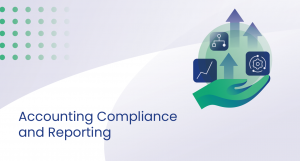The world of accounting has seen significant changes over the past few decades and for some can feel rather overwhelming. With the advent of technology, accounting software has taken over the traditional methods of accounting, which is a completely new world for some people. However, 4pointzero are a consultancy of accounting experts primed to help you understand the ways of revolutionising your business by using integrated accounting solutions.
We install cloud-based accounting solutions that help businesses of all sizes and industries with their accounting and financial operations. Part of our time with you will include sharing best practices from our vast experience, but also giving you tips on how to get the best out of the software. This will include understanding how to add dimensions and settings within the software.
Work with Dimensions
Dimensions play a crucial role in various fields, including accounting, data analysis, and project management. Dimensions act as values that categorize entries, making it possible to track and analyze them on various documents, such as sales orders. For instance, dimensions can indicate the project or department from which an entry originated.
They serve as essential tools for categorizing, grouping, and analyzing data, allowing for a deeper understanding of complex information. Let’s explore how dimensions are used in different contexts:
Accounting Dimensions
Accounting dimensions play a vital role in organizing and analyzing financial transactions. They function as customizable labels or data that can be linked to each transaction, allowing users to tailor them to their specific requirements. Some common examples of accounting dimensions include Customer Group, Business Group, Cost Centre, and Product Region.
To streamline the accounting process, reference data or default values can be set for various accounting dimensions, such as customers, suppliers, company contacts, products, expense items, and production resources. These defaults can be automatically applied at the transaction level, depending on the configured settings for each accounting dimension. Users have the flexibility to choose the relevant accounting dimensions to be tracked for each account from the chart of accounts. Utilizing the Accounting Dimension Summary report, businesses can track totals based on these dimensions, facilitating deeper insights into financial trends.
Implementing dimensional accounting involves tagging transactions with appropriate dimensions like Branch or Business Unit, which allows for distinct maintenance of each segment. This approach reduces the need for extensive upkeep of general ledger (GL) accounts and preserves the integrity of the Chart of Accounts.
By leveraging dimensions instead of creating separate general ledger accounts for each department and project, businesses can achieve a more efficient and streamlined analysis process. With dimensions in place, organizations can harness the power of business intelligence tools to gain valuable insights, such as identifying which department is responsible for selling specific items.
Accounting dimensions serve as flexible tags or attributes that enhance financial data organization and reporting. By attaching dimensions to transactions, businesses can gain valuable insights into their operations, optimize analysis, and make informed decisions to drive growth and success.
Analysing by dimensions
In data analysis, dimensions are variables or characteristics that provide additional context to the data being studied. Unlike measures that represent numerical values, dimensions are qualitative and offer a way to segment data for in-depth analysis. For instance, in a sales analysis, dimensions could include Customer Segment, Geographic Region, or Product Category. By analyzing data based on different dimensions, organizations can identify patterns, trends, and opportunities that might otherwise remain hidden.
Dimensions are attributes that allow you to categorise transactions in a way that is meaningful to your business. Adding dimensions and classifying transactions is an essential step that 4pointzero will take you through when they set up your integrated accounting system. They are used to track and analyse financial data. For instance, dimensions can be used to track the department, project, or location that a transaction belongs to.

Dimensions can be added within the 4PointZero software to provide more context to the transactions. When saving a dimension in the software you have the ability to name it and choose the type of dimension. It can be a customer, product, project, department, location, or anything else that is relevant to your business. We will also highlight to you how adding dimensions within the integrated accounting software enables you to easily create customised reports that give you meaningful insights into how money is being spent across different areas of your business.
Project Management Dimensions
In project management, dimensions are used to categorize and manage different aspects of a project. For example, a software development project may have dimensions like Feature, Priority, and Status. By using dimensions, project managers can prioritize tasks, allocate resources, and track progress more efficiently. Dimensions offer a structured approach to managing projects, ensuring that teams stay organized and focused on delivering successful outcomes.
Business Intelligence and Reporting
Dimensions are fundamental to business intelligence (BI) and reporting tools. By utilizing dimensions, organizations can create multidimensional data models that allow for flexible and interactive analysis. BI tools can slice and dice data based on various dimensions, enabling users to explore information from different angles. This level of granularity empowers decision-makers to make well-informed choices based on comprehensive insights.
Simplifying Chart of Accounts
In accounting, dimensions can be used to simplify the Chart of Accounts. Instead of creating numerous general ledger accounts for different departments or projects, dimensions can be employed to categorize transactions. This simplification not only reduces complexity but also facilitates better analysis and reporting capabilities.
Dimension sets
Once you have added the dimension, the next step is to assign it to transactions. You can also filter transactions based on the dimension to view specific data. For instance, if you have assigned the dimension ‘Department’ to a transaction, you can filter transactions based on the department to view the financial data related to that department. This allows you to get custom financial reports to a specific need no matter which stakeholder and retrieve information with ease.
Setting up dimensions
The next phase is to set up ‘settings’ within the finance and integrate accounting solutions. Settings are customisable options that allow you to fine-tune the functionality of the software according to your specific business needs. There is a whole host of settings options that you can utilise. 4pointzero’s team of experts will talk you through the options available and explain their purpose, so that you can get the most out of your integrated accounting software package.
The settings options can include options to configure the chart of accounts, manage tax rates, set up default currency, payment terms and user permissions. You can also add custom fields to transactions to capture additional information. For instance, if you require customers to provide a purchase order number, you can add a custom field to the sales invoice to capture this information.

All resources for dimensions accounting software
We can briefly define what these settings are now, but 4pointzero’s team would go through them and their functions in more detail during our project time with you:
Currency – This setting allows you to set your default currency for all transactions entered into our integrated software.
Tax – If your business is subject to sales tax or value-added tax (VAT), this setting enables you to set up tax codes and rates for accurate tracking.
Chart of Accounts – A chart of accounts is a list of all the accounts used by a business as part of its financial reporting process. This setting allows you to customise account names and numbers based on your specific needs.
Payment Terms – Payment terms refer to the agreed-upon timeline between a buyer and seller when it comes to payment for goods or services provided. This setting enables you to customise payment terms based on your unique requirements.
User Permissions – This setting allows you to control who has access to what data within your accounting software. You can assign different levels of access depending on each user’s role within your organisation. You can set up user roles and permissions to ensure that users only have access to the information that is relevant to their role. For instance, you can set up a role for the accounts payable team that only has access to purchase orders and supplier invoices.
General settings – Allow you to customise the look and feel of the software. You can add your company logo, set up email templates, and configure the date and time format. With integrated business system incorporate the 4pointzero’s solutions to work in tandem with other existing applications you have in your business, such as CRM software, project management tools, and payroll software.
The combination of adding dimensions and settings within cloud-based software contributes to you ensuring that your accounting package from 4pointzero is completely tailored to your business needs, making it easier to manage all of your accounting and financial operations. Dimensions allow you to track and analyse financial data based on different attributes such as department, project, or location, whereas settings allow you to customise the accounting solution to your business needs, manage user accounts, and integrate with other applications.
In conclusion, adding dimensions and customising settings within the integrated accounting solutions provided by 4pointzero is essential for businesses looking for an efficient way to manage their finances. With the right configuration, 4pointzero’s accountancy packages can become an indispensable tool for businesses looking to streamline accounting operations and make informed decisions based on financial data. By following best practices and utilising added dimension features you can lead your business towards better financial management processes thus resulting in growth opportunities as well as greater success overall.
Frequently Asked Questions (FAQ)
What is integrated accounting solutions?
Integrated accounting solutions are software programs or platforms that streamline and automate various accounting processes within an organization. These solutions bring together different accounting functionalities, such as bookkeeping, financial reporting, invoicing, and inventory management, into a single integrated system.
How can integrated accounting solutions benefit my business?
Integrated accounting solutions offer several benefits to businesses. They help in improving efficiency by automating repetitive tasks, reducing manual errors, and providing real-time visibility into financial data. These solutions also enable better financial decision-making by generating accurate and timely reports, facilitating budgeting and forecasting, and enhancing data analysis capabilities.
Why do we need integrated accounting systems?
Integrated accounting systems are essential for efficient financial management. They streamline processes by integrating various accounting functions such as bookkeeping, payroll, and inventory management into a single system. This integration improves accuracy, reduces duplication of efforts, and provides real-time financial information. It enhances decision-making capabilities, facilitates compliance with regulations, and enables seamless communication between departments. Ultimately, integrated accounting systems promote productivity, cost-effectiveness, and organizational success.
Can integrated accounting solutions integrate with other business software?
Yes, integrated accounting solutions often offer integration capabilities with other business software and applications. They can seamlessly connect with customer relationship management (CRM) software, enterprise resource planning (ERP) systems, payroll software, inventory management tools, and more. This integration enables smooth data flow across different departments and enhances overall operational efficiency.
Are integrated accounting solutions secure?
Yes, reputable integrated accounting solutions prioritize data security. They employ robust security measures, such as encryption, user authentication, and regular data backups, to safeguard your financial information. Additionally, they comply with industry standards and regulations to ensure the highest level of data protection and privacy.
How can integrated accounting solutions simplify tax compliance?
Integrated accounting solutions often include features that simplify tax compliance processes. They can automate tax calculations, generate tax reports, and provide tools to ensure compliance with tax regulations. By streamlining tax-related tasks, these solutions help businesses save time and minimize the risk of errors when it comes to tax filing and reporting.



